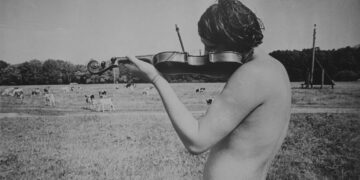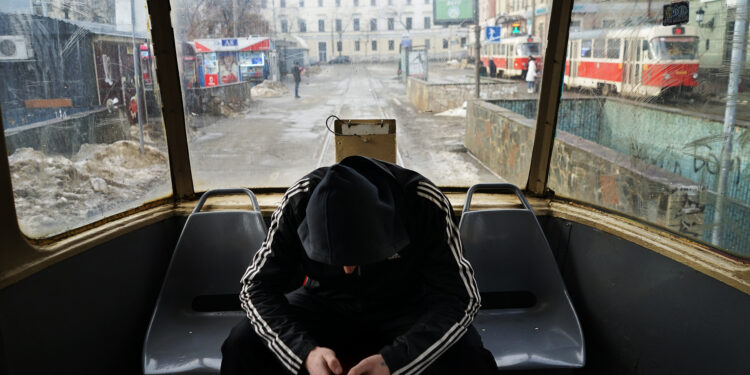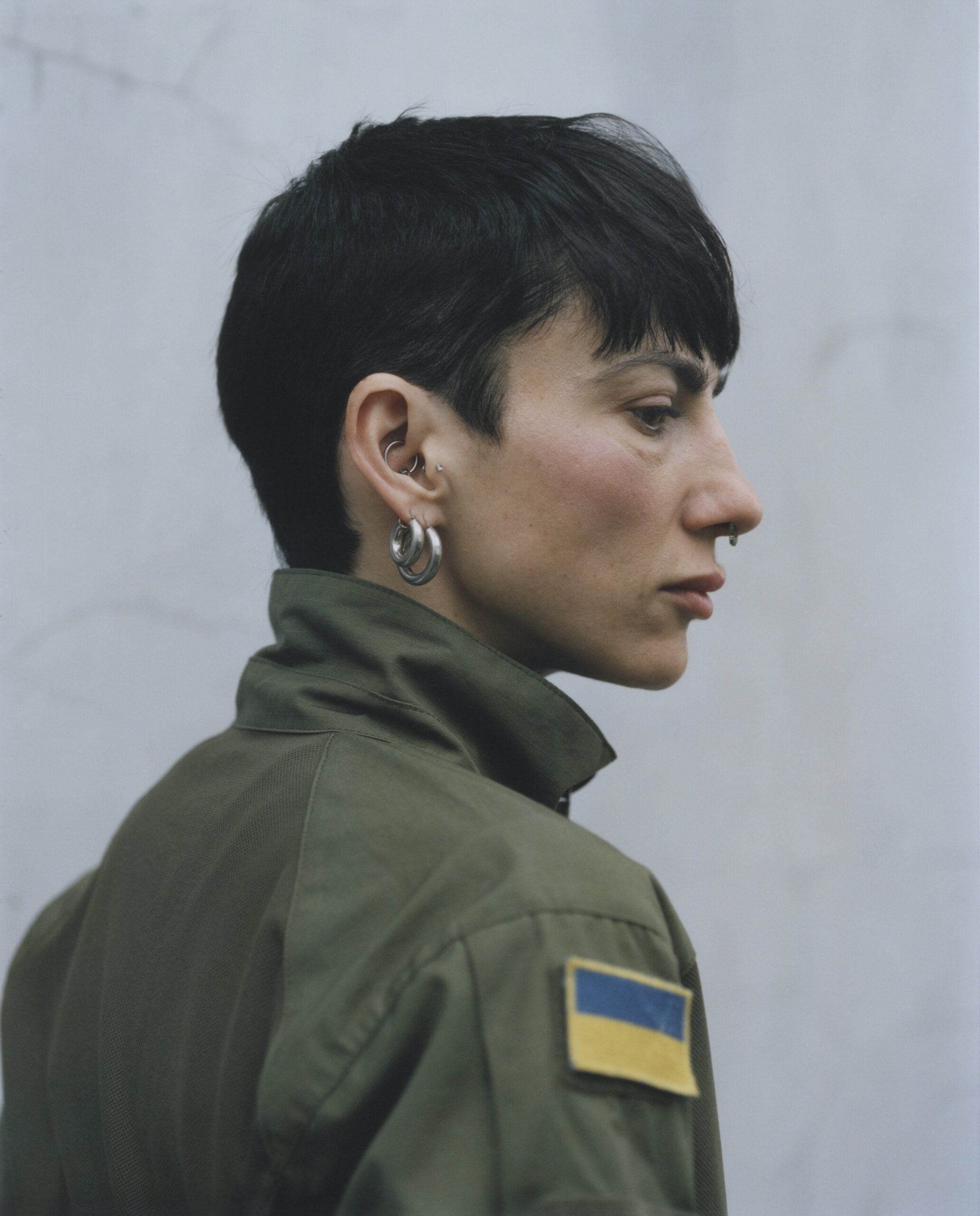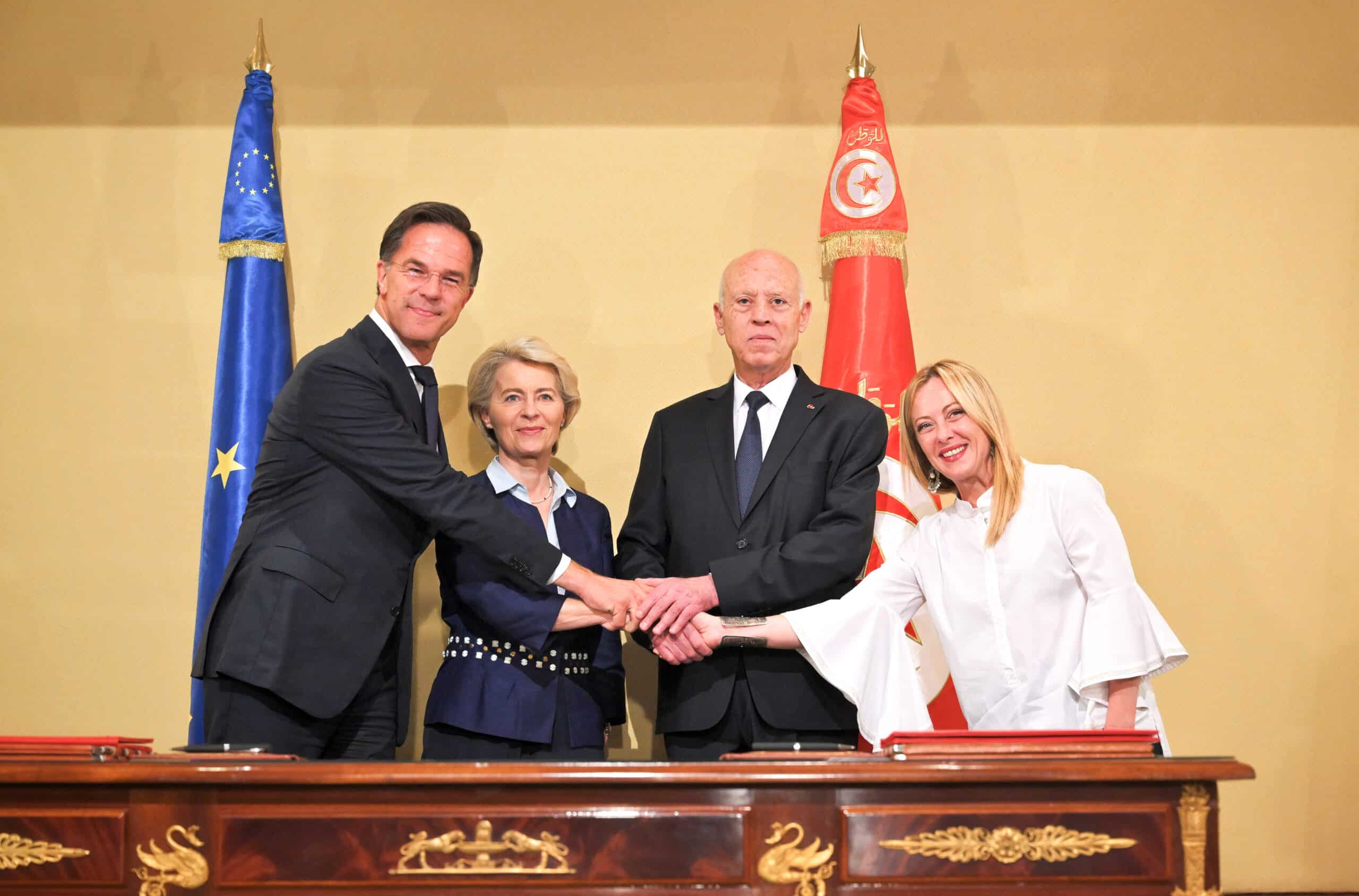Brussels – A tribute to the struggle for freedom of expression and art of the Ukrainian people, who just tomorrow (Feb. 24) will celebrate the second sad anniversary since the beginning of the Russian invasion: At the Center for Photographic Art Hangar, in the heart of Ixelles, until March 23, the works of 22 Ukrainian photographers are on display. From the 1970s to the present, there is a fil rouge linking them: “The history of Ukraine is a struggle for the future that continues across generations,” as explained by the co-curator of “Generations of Resilience,” Kateryna Radchenko.
Rediscovering three eras through three generations of artists, the youngest of whom began shooting at the turn of the last conflict: This is the idea that Hangar and its director, Delphine Dumont, developed with Radchenko and the Kharkiv School of Photography Museum. It all starts precisely there, in one of the cities that have become a symbol of Ukrainian resistance against Moscow: from the early works of the “founding fathers” of the Kharkiv School (one of its leading exponents, Yevegeniy Pavlov, was present for the opening) to those of the new generation, the connection is clear.

A spiritual and aesthetic legacy. In 1970s Ukraine, as well as today, photographers use their art as a way to express their opposition to an ideology, regime, or conflict, whether it is in the face of Soviet censorship, as in Pavlov’s Violin Series—a series of shots depicting a group of young hippies on a bucolic day by a lake as they play music and bathe completely naked—or as a response to the Feb. 24, 2022, Russian tank invasion, as in the series devoted to emerging photographers who participated in the Odesa Photo Days Festival. It is “disturbing,” Hangar’s director points out, “to see that works created in 2022 often adhere to the same aesthetic and stylistic codes as those created 50 years earlier.
The exhibition seems to suggest that cyclical processes and historical events erase the boundary between these generations, a “spiral nature” of Ukraine’s struggle for independence and democratic development.
The visual language and experimental methods of the Kharkiv School guided a whole group of young photographers, born at the end of the Soviet Union, who contributed to the active phase of the formation of the country’s new identity. Then, the generation born after the entry into the third millennium experienced dramatic changes, starting with the 2014 Crimean invasion up to the full-scale invasion that began on Feb. 24, 2022. In the blink of an eye, photographers turned into war reporters and documentary filmmakers without experience working in a war zone.
By choosing to exhibit, for each contemporary artist, series created before and after that date, the totality of the war in the new everyday life of Ukraine is perceived. The themes dissected by the artists are directly related to the war and its consequences on the population, representing a form of “therapeutic assimilation” of the facts.
But as the artist and curator Radchenko pointed out, the link to early photography has not been broken: the intellectual underground of the last century has been transformed into a lived and domestic underground, as evidenced by the shots of civilians confined to underground shelters to protect themselves from Russian bombing. Descending Hangar’s three floors of stairs, the message of Generations of Resilience becomes clearer: as witnesses to their times, Ukrainian artists continue to defend themselves and resist. Art never harms and carries hope, even in the darkest of times.
English version by the Translation Service of Withub



![Una donna controlla le informazioni sul cibo specificate sulla confezione [foto: archivio]](https://www.eunews.it/wp-content/uploads/2014/12/Etichette-alimentari.jpg)




![Gentiloni rilancia il Pos e il pagamento elettronico contro l'evasione [foto: imagoeconomica]](https://www.eunews.it/wp-content/uploads/2022/11/Imagoeconomica_1834669-scaled.jpg)


